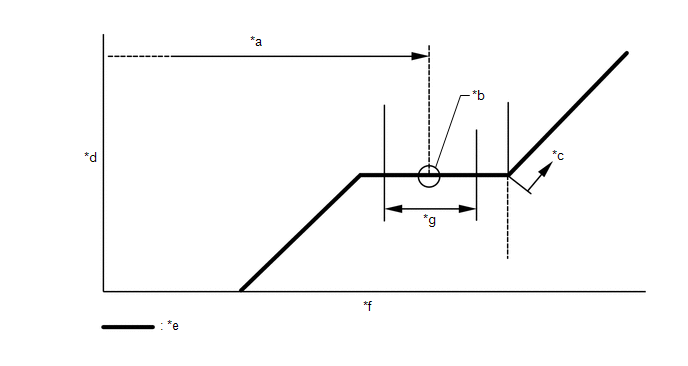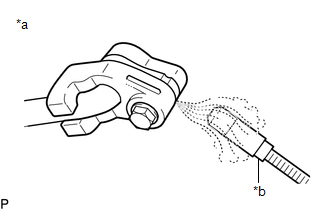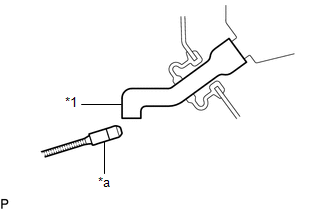Lexus RX (RX 350L, RX450h) 2016-2025 Repair Manual: Replacement
REPLACEMENT
PROCEDURE
1. RECOVER REFRIGERANT FROM REFRIGERATION SYSTEM
(a) Start the engine.
(b) Operate the compressor under the following conditions:
| Item | Condition |
|---|---|
| Operating Time | 3 minutes or more |
| Temperature setting | Max cold |
| Blower speed | High |
| Engine | Idling |
| A/C switch | On |
This causes most of the compressor oil from the various components of the A/C system to collect in the compressor.
HINT:
It is not necessary to operate the compressor if the A/C does not operate because of compressor lock, etc.
(c) Stop the engine.
(d) Recover the refrigerant from the A/C system using a refrigerant recovery unit.
HINT:
Use the refrigerant recovery unit in accordance with the manufacturer's instruction manual.
2. CHARGE AIR CONDITIONING SYSTEM WITH REFRIGERANT
HINT:
Charge refrigerant in accordance with the equipment manual.
(a) Perform vacuum purging using a vacuum pump or appropriate equipment.
NOTICE:
Be sure to use a refrigerant recovery unit that is compatible with HFO-1234yf (R1234yf) systems.
(b) Charge the air conditioning system with refrigerant.
Refrigerant Type:
HFO-1234yf (R1234yf)

| *a | Standard Charge Amount | *b | Mean Value in Proper Range |
| *c | Overcharged | *d | High Pressure |
| *e | Sub-cool System | *f | Refrigerant Amount |
| *g | +/-30 g (+/-1.05 oz) | - | - |
Standard Charge Amount:
w/o Rear Air Conditioning System
610 to 670 g (21.5 to 23.6 oz)
w/ Rear Air Conditioning System
780 to 840 g (27.5 to 29.6 oz)
NOTICE:
- Do not turn the A/C switch on before charging the air conditioning system with refrigerant. Doing so may cause the compressor to operate without refrigerant, resulting in overheating of the compressor.
- The refrigerant amount should be checked by quantity (weight).
- The graph above is shown for reference only.
HINT:
Ensure that sufficient refrigerant is available to recharge the system when using a refrigerant recovery unit. Refrigerant recovery units are not always able to recover 100% of the refrigerant from an air conditioning system.
3. WARM UP ENGINE
(a) Keep the A/C switch on for at least 2 minutes to warm up the compressor.
NOTICE:
To prevent damage to the compressor, be sure to warm up the compressor when turning the air conditioning on after removing and installing any air conditioning system lines (including the compressor).
4. INSPECT FOR REFRIGERANT LEAK
(a) After recharging the air conditioning system with refrigerant, inspect for refrigerant leaks using a gas leak detector.
HINT:
Be sure to use a gas leak detector that is compatible with HFO-1234yf (R1234yf) systems.
(b) Carry out the test under the following conditions:
- Turn the engine switch off.
- Ensure good ventilation (the gas leak detector may react to volatile gases which are not refrigerant, such as gasoline vapor and exhaust gas).
- Repeat the inspection 2 or 3 times.
-
Measure the pressure to make sure that there is some refrigerant remaining in the air conditioning system.
Pressure when the compressor is off: approximately 392 to 588 kPa (3.9 to 5.9 kgf/cm2, 57 to 85 psi)
| (c) Using a gas leak detector, inspect for refrigerant leaks from the air conditioning system. |
|
| (d) Bring the gas leak detector close to the drain cooler hose with the detector power off, and then turn the detector on. HINT:
|
|
(e) If a refrigerant leak is not detected from the drain cooler hose, remove the blower motor control from the cooling unit. Insert the gas leak detector sensor into the unit and check for leaks.
(f) Disconnect the pressure sensor connector and leave it for approximately 20 minutes. Bring the gas leak detector close to the pressure sensor and check for leaks.
HINT:
When checking for leaks, the presence of oily dirt at a joint can indicate a leak.
 On-vehicle Inspection
On-vehicle Inspection
ON-VEHICLE INSPECTION PROCEDURE 1. INSPECT REFRIGERANT PRESSURE WITH MANIFOLD GAUGE SET HINT: The following examples show the readings of a manifold gauge set and the corresponding air conditioning sy ...
 Refrigerant Line
Refrigerant Line
...
Other materials:
Lexus RX (RX 350L, RX450h) 2016-2025 Repair Manual > Noise Filter (w/ Rear No. 2 Seat): Components
COMPONENTS ILLUSTRATION *1 COOLER (NO. 2 ROOM TEMP. SENSOR) THERMISTOR *2 DECK TRIM SIDE PANEL ASSEMBLY LH *3 FRONT DECK SIDE TRIM COVER LH *4 NO. 1 LUGGAGE COMPARTMENT LIGHT ASSEMBLY *5 NO. 1 LUGGAGE COMPARTMENT TRIM HOOK *6 NO. 2 AIR CONDITIONING CONTROL ASSEMBLY ...
Lexus RX (RX 350L, RX450h) 2016-2025 Repair Manual > Sfi System: Internal Control Module Monitoring Processor Performance Watchdog/Safety MCU Failure (P060A47)
MONITOR DESCRIPTION The main CPU and sub CPU of the ECM perform data communication between each other. The main CPU monitors the communications and WDC pulses from the sub CPU. When the signal malfunctions below are detected, this DTC is stored. DTC No. Detection Item DTC Detection Condition ...
Lexus RX (RX 350L, RX450h) 2016-{YEAR} Owners Manual
- For your information
- Pictorial index
- For safety and security
- Instrument cluster
- Operation of each component
- Driving
- Lexus Display Audio system
- Interior features
- Maintenance and care
- When trouble arises
- Vehicle specifications
- For owners
Lexus RX (RX 350L, RX450h) 2016-{YEAR} Repair Manual
0.0096


